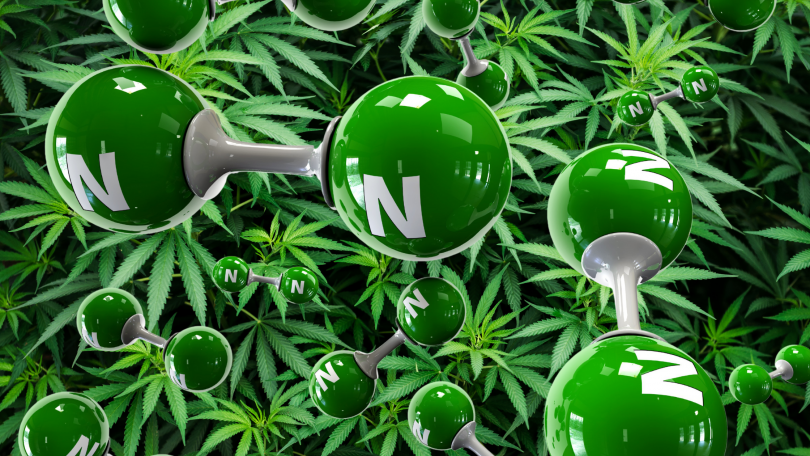Nitrogen (N) is one of the most important nutrients for plants, including cannabis. It serves as a precursor for the biosynthesis of key metabolites for plant cells like nucleic acids, amino acids, and chlorophyll, just to name a few. These are all vital components to a plant’s lifecycle. Without enough N, plant growth and maturation are slowed down considerably. On the other hand, with the right amount of N, plants will have the components they need to flourish.
For those wanting to encourage healthy plant development and maximize the yields of their cannabis, having a balanced supply of N is one of the keys to having a successful harvest. In a study published recently [1], researchers measured the developmental, physiological, and chemical responses of cannabis to total N supply, at increments of 30, 80, 160, 240, and 320 mgL-1 N, distributed to the cannabis plants during their vegetative stage (32 days). They found an optimal ratio of N for maximizing cannabis growth and several other interesting notes.
Ultimately, the research reports “that the morpho-physiological function under long photoperiod in medical cannabis is optimal at 160 mgL-1 N supply, and significantly lower under 30 mgL-1 N, with visual deficiency symptoms, and 75 and 25% reduction in plant biomass and photosynthesis rate, respectively.” This is great to know for cannabis cultivators wanting to maximize their yields by providing a steady supply of N. They also noted, “nitrogen use efficiency (NUE) decreased with increasing N supply, while osmotic potential, water use efficiency, photosynthetic pigments, and total N and N-NO3 [nitrogen in nitrate] concentrations in plant tissues increased with N supply.” [1].
Saloner A, et al. Response of medical cannabis (Cannabis sativa L.) to nitrogen supply under long photoperiod. Frontiers in Plant Science. 2020. 11:572293. https://doi.org/10.3389/fpls.2020.572293. CC BY 4.0
Application of 240 mgL-1 N restricted root development, and 320 mgL-1 N stunted growth and darkened color. The researchers explain that high concentrations of N metabolites (such as nitrate and ammonium) cause toxicity and cell damage in addition to stomatal closure. On the other hand, insufficient N restricts photosynthetic pigments—chlorophyll contains four N atoms—and thus, the low-N leaves were chlorotic and yellowing. While low-N plants accumulated higher levels of metals such as magnesium, calcium, and zinc, high-N plants accumulated fewer of the metals due to competition from ammonium.
These are all interesting results; however, outdoor and greenhouse-grown cannabis plants were not present in this study. The only cannabis plants used for the study were cultivated indoors, under controlled conditions, in pots with soilless media (perlite), with the supply of N being administered through an irrigation system. Although the same N levels may benefit outdoor and greenhouse-grown cannabis, more research is needed regarding how N supply affects cannabis grown in other conditions. [1]
Reference:
- Saloner A, et al. Response of medical cannabis (Cannabis sativa ) to nitrogen supply under long photoperiod. Frontiers in Plant Science. 2020. 11:572293. https://doi.org/10.3389/fpls.2020.572293 Times Cited: 2; Journal Impact Factor: 4.407








